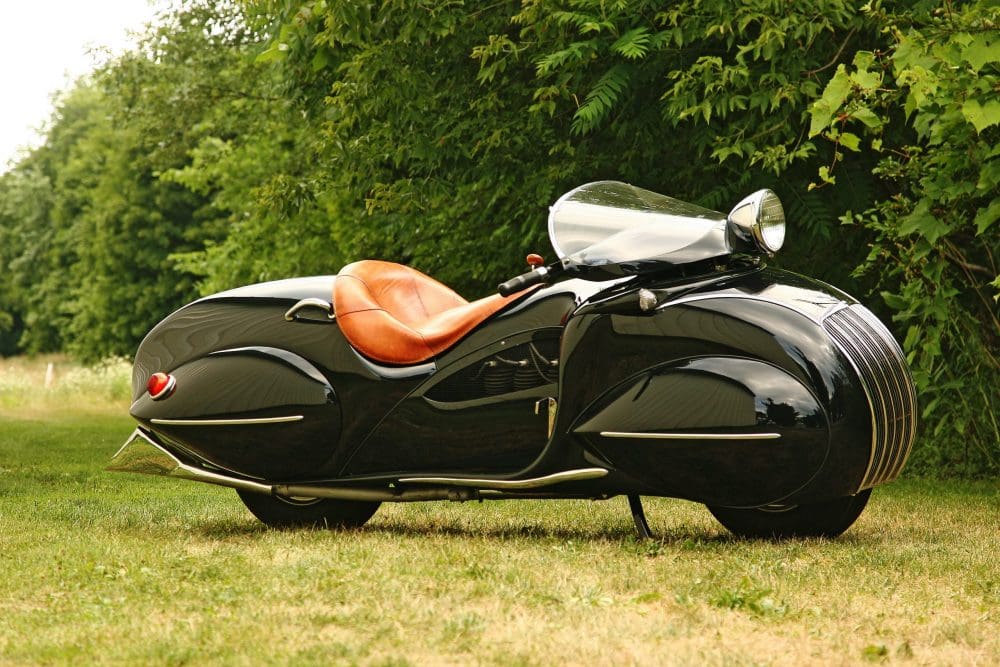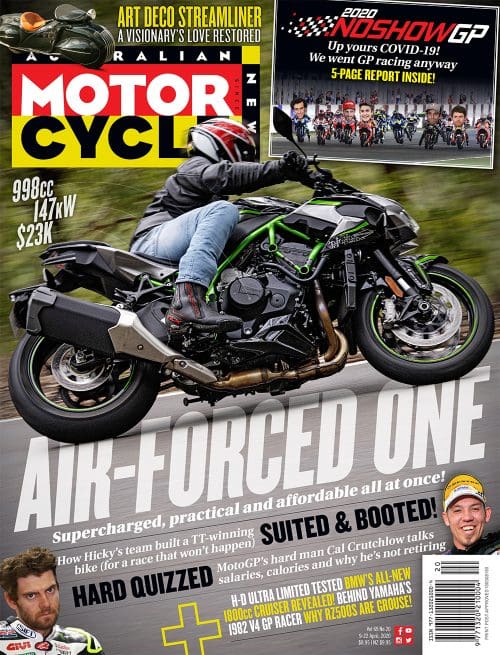Art Deco was an innovative and ultra-distinctive style of design, which spanned the boom times of the Roaring ’20s and the bust of the Depression-ridden 1930s. Derived from the French term l’art décoratif, it embraced all forms of design, from fine arts to fashion, furniture to film, photography to transport, and exterior architecture to interior design.
It celebrated the newly mechanised modern world, yet embraced both handmade and mechanical manufacture of all kinds of creations, from everyday products to exclusive works of art. It originated in France in 1925, then quickly spread around the world, to bring its distinctive style to the streets and skylines of cities from Paris to New York, Sydney to Shanghai. It was the style of the flapper girl and the office typist, of the factory worker and daredevil car driver.
Art Deco was avantgarde, and it was everywhere. Not even motorcycles were spared. There was the German-made five-cylinder FWD Megola, the American Neracar that was also built in Europe, and the BMW R7 prototype, to name but a few.
But what is arguably the most resolutely Art Deco motorcycle ever built emerged in America in 1935 as the one-off creation of a Michigan-based metalworker employed by Oldsmobile. It was based on his 1930 1300cc four-cylinder Henderson KJ Streamline model – the ultimate expression of this prestigious American brand’s engineering. His name was O. (for Orley, which he preferred to ignore) Ray Courtney, and though little is known of him, he built a handful of completely innovative custom motorcycles during his life.
In a Popular Science article from 1953, Courtney was portrayed alongside photos of other motorcycles he’d gone on to create during the postwar era, their style evoking the sense of optimism prevalent in the early 1950s, of a nation basking in the contentment of the postwar era.
While working with metal was his forte, Courtney was also adept at a drawing board, making a significant contribution to the body design of the 1933 Oldsmobile F-33, today a much prized antique American model.
Seen in the metal, even by today’s standards the finished result is pretty breathtaking to look at, with seductive curves and many subtleties in its shape. Stunningly beautiful, for sure – but also impractical and hard to ride, the Streamliner’s complex curved body was both heavy and difficult to replicate, and the seating position is very cramped, especially for a tall person. However, it’s believed that Courtney was a person of short stature, and he apparently rode the Streamliner quite often, though he never made another example. The bike you see in these photos is the one and only.

Check out the full story in Vol 69 No 20 on sale now












